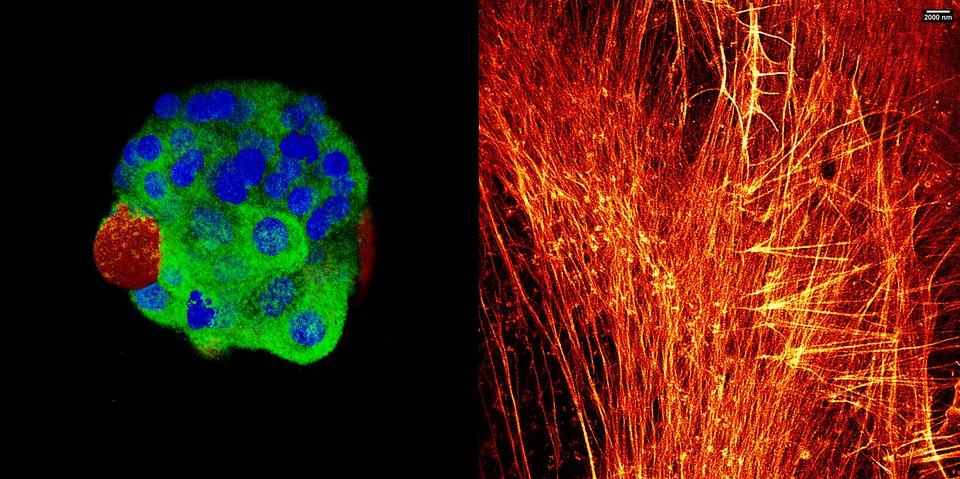Artificial Intelligence, Mass Spectrometry, and COVID-19: Best of SLAS Europe 2021
July 1, 2021
Ada Yee
What a fascinating SLAS Europe 2021. Here we round up a few of our favorites from the virtual conference:
AI in Drug Design, Subcellular Imaging, and Precision Medicine
This edition of SLAS Europe featured several talks that showcased the range of ways in which AI continues to transform drug discovery. From one end, we saw AstraZeneca’s elegant explanation of how they apply advances in natural language processing—where artificial intelligence (AI) is being used to tackle problems such as language translation and text generation—to analogous problems in de novo drug design. On the other end, we heard a stunning presentation from the biotech Allcyte, which is using AI to analyze highly complex 2D and even 3D images of primary human tumor samples screened against different drugs, to better tailor treatments to individual patients (their first clinical trial showed positive outcomes and a second is underway).
It was also interesting to see AI being used not only to analyze final outputs, but at intermediate stages of imaging workflows. At the Frauenhofer Institute, AI is being used to automatically sort properly-formed organoids, while the Enabling Technologies group at Bayer presented work they apply AI to define imaging ROIs for subcellular imaging of centrosomes by STED microscopy—a super-resolution imaging modality that would otherwise be unsuitable for high-throughput imaging. Both these cases demonstrate how AI can help bring cutting-edge methods into the high-throughput screening lab. This was really exciting to us at Genedata, as we continue to optimize Imagence—our AI workflow for image analysis—and presented some of this work in a poster as well.
Finally, it’s important to think about how AI can be employed to make decisions and predictions based on data from a variety of sources across R&D workflows, and how to best prepare data for this purpose. Cameron Scott, a Scientific Account Manager at Genedata, presented two case studies of what this looks like.

Case Studies in Mass Spectrometry Screening
As we observed earlier this year, the power of mass spectrometry for label-free high-throughput screening continues to prove itself. OMass Therapeutics talked about using native MS technology to analyze membrane proteins, yielding remarkably detailed biological insight. For instance, it has allowed them to see how a drug modulates whether a receptor signals through its metal-ion bound or unbound form (as seen through changes in a certain adducts), or how a cofactor can modulate ligand binding. In high-throughput screening mode, their workflow can process 125,000 samples in 3 days.
Similarly, MD Catapult outlined the key ingredients that allowed them to adopt HT-MS for complex cellular assays, including assays for enzymatic activity performed over multiple time points, media conditions, and cell lines—amounting to over 20,000 samples. As remarked upon in the discussion, with that volume and richness of data, proper data handling is a must: “When you acquire a lot of data, a lot of the times you can get lost in the data. So what we do is use Genedata,” said speaker Martin Bachman. We’re glad to see Genedata has worked well in their hands!
Working Safely Post-COVID
As we slowly emerge from the COVID crisis, the question arises: how has life changed as a result of the pandemic? Certainly, for many working in drug discovery, the pandemic brought new urgency to vaccine and anti-viral research as programs pivoted towards fighting COVID-19. As we’ve noted before, Genedata has been part of some of this work (more examples here and here).
We’re starting to realize, however, that COVID hasn’t simply changed what we work on in drug discovery, but also how we are doing it. For example, a poster from KU Leuven showcased how their new “lab-in-a-box” Caps-It system leverages full robotic as well as analysis automation with Genedata Screener to perform high quality screens of over 20,000 compounds a day against SARs-CoV2, all while keeping their personnel out of harm’s way. Through other efforts like this, including in-house PCR testing programs, we see the R&D community striving to create a safe work environment in which this important work can continue, and we are glad to play a role in this.
Highlighted Talks & Posters
Applying AI and Automation for drug design, AstraZeneca
High throughput, automated analysis and isolation of organoids from suspension based on artificial intelligence mediated image recognition, Frauenhofer Institute
Automated STED microscopy for cell-biological high-throughput analyses, Bayer
Fueling Drug Discovery with AI-ready Data: Running Automated Assay Cascades in the Digital Lab, Genedata
Native Mass spectrometry as a novel drug discovery method for membrane proteins, OMass
The rise of high-throughput mass spectrometry for cellular profiling of early drug candidates, MD Catapult
Mention of companies or research organizations in this article does not indicate their endorsement of Genedata or its products. Presentations mentioned here have been selected based on our opinion of their scientific and technological interest.
Author: Ada Yee, Ph.D., Scientific Story Researcher, Genedata Screener.